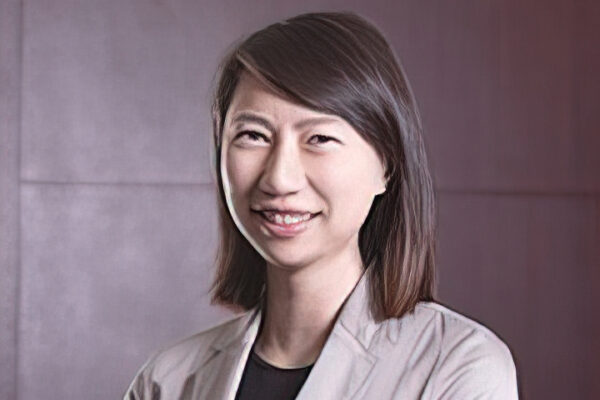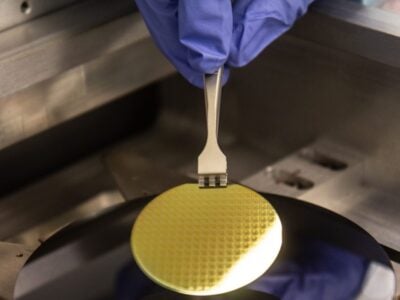
Connecting up AI for the Internet of Things
Advantech is in the middle of a key transition to machine learning and AI in the industrial market (AIoT).
“In the past our focus was only IoT but then along came AI,” said Linda Tsai, President of Industrial IoT at the company. “In the last three years everyone talked a lot about AIoT but the progress wasn’t there. After Covid I think the AIoT will be adopted in many applications so to shorten the development cycle. But no one company can achieve everything,” she said. “That’s why we are working with regional partners massively to provide the solution.”
This is key shift for the company.
“The industry of IoT started an innovation trigger in 2010 and saw a peak of over expectation in 2015, and today in 2021 it is now growing in enlightenment. By 2025 I believe we can see a much improved IoT ecosystem,” said KC Liu, chairman of Advantech.
The company expects the IoT market to reach $450bn by 2025 based on Gartner reports and its internal analysis, with integrated solutions becoming the biggest part of the business at over 50 percent.
“Phase one is edge computing and edge division – this is the hardware business,” said Liu. “Since 2015 we started the development of phase 2 with WISE-PaaS software plus many industrial apps. We expect phase one and two to enable phase three with domain specific solutions and this will be the biggest part of the business and needs to cover domain knowledge of individual sectors through co-creation with partners
Tsai is leading this move into the domain specific applications across many different industrial markets.
“Our emphasis is at the edge and our products are not just the computing boards and systems but the sensors as well so we think we can provide most of the hardware solution to the customer and reduce their interoperability issues in the hardware and the software,” she said.
“Using AI in IoT we have lots of benefits but we are finding is that many customers think AI can resolve lots of things. The problem is they want AI in their application but they don’t know how to do it. The answer will not be one supplier, it will be lots of people. That’s why we call it the AIoT ecosystem,” she said.
Customers know the application but not the technology to implement, she says. “You need data but that needs to be digitalised, so it depends on whether the customer data is digitalised. Then there is the integration capability.”
“When we talk to customers they expect us to do everything but we are not a system integration company. That’s even more important for AIoT which requires different stakeholders, from the system integrator to digitalise the data for the end user, the AI accelerator from companies such as Intel or Nvidia, the AI software partner. We are the hardware provider – we are the one connecting everyone together so the integration capability for the domain focus is the key. This is not easy as the ecosystem needs to be focussed on one domain. Duplicating the success for AIoT is not easy,” she points out.
As part of the move to more domain-specific applications, the company is looking to work with, and back, start ups that can use its technology.
“Most AIoT we are looking at is video related and that requires high performance computing – even on the product strategy we are developing the high computing power products with industrial grade to be installed at the edge.”
Next: Domain specific AIoT
She points to an example customer in sheet metal inspection. This needs a combination of rule-based and pattern recognition machine learning for its AI system that is highly specific. “When we go to a second customer we cannot duplicate the software, we still need to tweak it,” she said. “With vibration data, that needs even more domain focus with even more data analytics and for those applications its more about the sensing module.”
“For me, everything is on the edge – the connectivity and the devices. We are strong in edge computing – we also have remote I/O modules for data acquisition, which is where Avantech started 37 years ago.”
This is not about the cloud for AI, she says. Despite developing its own cloud software, WIDE platform as a service (PaaS), thee company collaborates with Microsoft Azure ad Amazon AWS.
“We bring AI to the edge, not to the cloud,” said Tsai. “The cloud is for training but our edge customer needs the inference at the edge. After they go into mass production, that’s the edge. The training process is AI at the cloud. That will not be our core business, the data centre is not our core business. We do have a team doing high end server for ODM but as the hardware provider. With the ecosystem we bring AI at the edge as a total solution.”
The company does use the cloud for remote management of the hardware. “That’s very important for AIoT but not all the customers need cloud services. Other customers need cloud services for dashboard, not for AI, and they can use the subscription mode in WIS-PaaS and that might be the services business.”
Wireless, whether via a cellular connection or a low power LPWAN network, is vital for the edge connection, she says.
“For 5G we are waiting for IoT 5G rel16 – IoT low latency for 1m device is not there. The 5G module is still very expensive and not easy for customers to deploy at the edge. In a couple of years when the module is cost effective then private 5G could be a good alternative to WiFi,” she said. “I know a lot of customers have the proof of concept, but two years I think the time will come. The other place for 5G will be in the smart city, and the other technology we are looking at is LoRa,” she said.
Other AIoT articles
- Deal with Crosser to simplify edge analytics for IIoT
- Joining the 5G O-RAN Alliance
- Industrial server boards use COM-HPC standard
Other articles on eeNews Europe
- Test systems add Julia support for high performance AI analysis
- New CTO for Siemens Digital Industries
- IBM shows first 2nm chip
- Swiss interconnect maker buys UK photonic startup
- GlobalFoundries to make quantum photonic chips in Dresden, New York
- UK appoints innovation chief after three year search
 If you enjoyed this article, you will like the following ones: don't miss them by subscribing to :
eeNews on Google News
If you enjoyed this article, you will like the following ones: don't miss them by subscribing to :
eeNews on Google News



